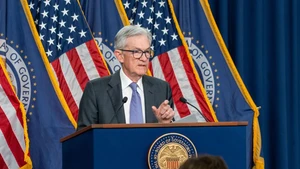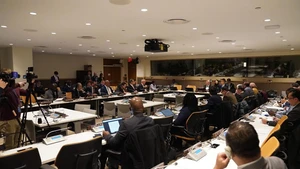In a statement after the publication of the bill, Federal Minister of Labour and Social Affairs Hubertus Heil emphasised that securing a skilled labour supply is one of Germany's biggest economic tasks in the coming decades.
According to Heil, with a record high number of nearly 2 million job vacancies in 2022, of one of the reforms includes the enactment of a new immigration law to address major barriers for migrants to Germany, especially those coming from countries outside the European Union (EU).
The German government's drafting of the immigration reform bill is aimed at attracting 400,000 high-skilled foreign workers each year to rebalance the aging population structure and address labour shortages in important economic sectors.
Federal Minister of Finance Christian Lindner excitedly shared that any skilled worker who can contribute to Germany's economic development will be welcome. The bill is expected to increase the number of workers from countries outside the EU by 60,000 people a year. The bill also eases previous strict regulations, such as allowing foreigners to apply for citizenship after 5 years of residence in Germany instead of the current 8 years.
Those with special efforts to integrate into society, such as fluency in German, will be eligible to apply after 3 years. The bill also repeals the ban on dual citizenship for people from non-EU countries, meaning that immigrants will no longer have to give up their original citizenship - a condition that is a "red line” for many naturalisation applicants.
Germany's population grew to 84.3 million in 2022, driven mainly by record numbers of immigrants, but it is still facing a workforce crisis as older people gradually withdraw from the workforce. A survey in January showed that more than half of German companies were struggling to find employees due to a lack of qualified workers.
Meanwhile, Germany's naturalisation rate is lower than other European countries, with a citizenship rate of 1.3 per 1,000 people in 2020 compared to an average of 1.6 per 1,000 people across the EU. An estimated 10 million people, or 12% of the population, are living stateless in Germany, preventing them from enjoying basic rights such as voting or being appointed to high positions in government.
Germany currently has about 100,000 pending applications for naturalisation, many of which were filed many years ago. Berlin alone has about 26,000 applications for naturalisation. According to KOFA, a research unit on securing skilled labour, the shortage of skilled workers in Germany in the first quarter of 2023 has increased to a record level.
In March alone, the number of unfilled jobs was 558,000 positions, while the number of skilled workers who could not be recruited also increased to 88,000. According to KOFA research, the shortage of skilled workers is seriously affecting the labour market, especially in the fields of health, social services, and education.
The KfW, or German Credit Agency for Reconstruction, has released a survey showing that international trade tensions and supply chain disruptions will continue to put pressure on Germany, an export-oriented economy. According to the KfW, the shortage of skilled workers will be exacerbated by an aging population.
Natalia Banulescu-Bogdan, assistant director of the Migration Policy Institute, said that Germany, like many other countries, is facing severe demographic pressures, and the shortage of skilled workers has become a growing challenge for the future of the EU’s leading economy.
















